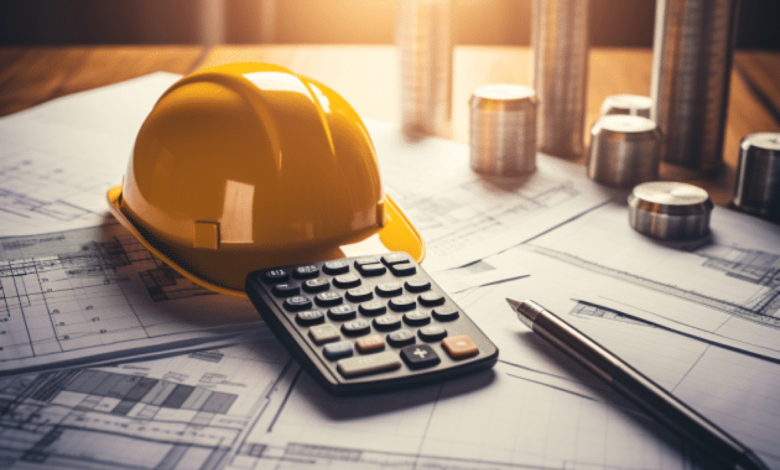Best Practices for Creating Construction Estimates!

Construction estimates are the foundation of every successful construction project. Accurate and detailed estimates help plan budgets and ensure that projects are completed within the allocated time and resources. These estimates clarify labor, material, and equipment costs, enabling project managers to foresee potential risks and make informed decisions. With proper construction estimations, projects can avoid overspending, delays, and resource mismanagement, leading to dissatisfied stakeholders and financial losses.
Creating precise estimates is vital for maintaining profitability and trust in the competitive construction industry, where every pound counts. This article outlines the best practices for building construction estimates and assisting contractors, project managers, and developers to streamline their processes. For expert help, we’ll introduce the best construction cost estimator NYC to provide accurate estimates.
Understanding the Importance of Construction Estimates
Construction estimates are essential for the success of any project, serving as a roadmap that ensures smooth execution and financial stability. They enable effective budget planning by allocating resources wisely and avoiding unnecessary overspending. Accurate estimates also streamline timeline management, helping to prevent delays and keep projects on track. By identifying potential cost overruns early, estimates act as a vital tool for risk mitigation, allowing contractors to address challenges proactively. Most importantly, precise and detailed estimates build client confidence and foster trust and transparency throughout the project. Together, these elements make building estimates a cornerstone of successful project management.
Best Practices for Creating Accurate Construction Estimates
Discover the best practices for creating accurate construction estimations that ensure project success. Learn how to plan budgets, manage timelines, and mitigate risks effectively. Let’s explore:
- Start with a Thorough Project Scope Review
A well-defined project scope forms the foundation of accurate construction estimations, ensuring everything is noticed. Start by analyzing blueprints and specifications to grasp project requirements thoroughly. Identify key deliverables, including tasks, materials, and milestones, while accounting for site-specific challenges such as access or terrain through detailed site visits. Don’t forget to factor in regulatory requirements and permit costs. By meticulously reviewing the project scope, you can uncover potential cost drivers early and create estimates that align with the project’s needs, setting the stage for successful execution.
- Leverage Historical Data
Historical data is a treasure trove for creating reliable construction estimates that offer insights to enhance accuracy and efficiency. By referencing past projects, you can benchmark costs, comparing material and labor expenses from similar undertakings. This data helps identify recurring challenges and patterns, giving you a head start on managing common issues. Moreover, adjusting for variables like inflation, market trends, and regional differences ensures your estimates remain relevant and precise. Leveraging historical data saves time and builds a strong foundation for confident decision-making and project success.
- Use Advanced Estimation Software
Technology has transformed the estimation process, increasing efficiency and accuracy. Construction estimation software streamlines operations with automated calculations that reduce manual errors. Real-time updates enable quick adjustments to market changes, while detailed breakdowns clarify labor, material, and equipment costs. Cloud-based access facilitates seamless collaboration with stakeholders. Tools like ProEst, Buildertrend, and RSMeans address diverse project needs, allowing you to select what best suits you. Leveraging these tools enhances accuracy, saves time, and helps you stay competitive in the construction industry.
- Incorporate Contingency Plans
Unexpected expenses are a common challenge in construction projects, but a well-planned contingency strategy can keep things on track. Allocating 5-10% of the total budget as a contingency fund ensures you’re prepared for unforeseen costs. Identifying potential risks, such as weather delays, material shortages, or design changes, allows you to anticipate challenges before they arise. Pair this with effective mitigation strategies, and you’ll have a solid plan to address these issues efficiently. A proactive approach safeguards your project’s timeline and budget while reinforcing confidence among stakeholders, ensuring smoother execution even in the face of surprises.
- Perform Detailed Quantity Takeoffs
Quantity takeoffs are vital for determining materials for construction projects. Tools like Bluebeam or PlanSwift allow for precise measurements that minimize errors. Accounting for all materials, from concrete to finishing supplies, prevents shortages or surpluses. Cross-checking calculations adds assurance and avoids costly mistakes. Accurate takeoffs reduce waste, optimize resources, and keep projects on budget.
- Factor in Labor Costs
Labor costs are a critical component of construction estimates, and accurately assessing them is essential for project success. Start by evaluating your workforce needs—determine the number of workers needed for each task and ensure you consider the right skill sets. Next, factor in hourly rates, including wages, overtime, and other benefits. It is also essential to account for productivity rates, adjusting for external factors like weather, task complexity, or varying skill levels. Providing a transparent and precise labor cost estimate ensures project accuracy and builds trust with clients and stakeholders, creating a foundation for long-term success.
- Break Down Costs into Categories
Organizing costs into clear categories is key to improving clarity and accountability in construction projects. You create a transparent financial structure by breaking down costs into specific areas, such as labor, materials, equipment, permit and regulatory fees, and overhead. Labor costs cover wages, benefits, and subcontractor fees, while material costs include raw materials, delivery, and waste. Equipment costs encompass rentals, fuel, and maintenance; permit fees account for building permits and inspections. Overhead costs reflect administrative expenses and project management fees. A detailed cost breakdown simplifies communication and makes tracking expenses easier, ensuring smooth project management from start to finish.
- Communicate and Collaborate with Stakeholders
Effective collaboration aligns construction estimates with stakeholder expectations.
Regular meetings inform all parties of progress and project changes.
Transparent documentation and sharing detailed forecasts and reasoning keep everyone aligned. Integrating feedback from clients, suppliers, and contractors refines estimates and early addresses concerns. Open communication fosters trust, reduces misunderstandings, and minimizes disputes, ensuring smoother project execution.
Bottom Line:
Predictable construction estimates are essential for successful project execution. Contractors can enhance accuracy and efficiency by following best practices such as thorough scope reviews, leveraging historical data, using estimation software, and incorporating contingency plans. Clear communication and collaboration with stakeholders further ensure smooth project progress.
My Virtual Estimator is your go-to solution for construction stakeholders in New York seeking expert estimation services. With a team of experienced professionals and advanced tools, they provide reliable construction estimations tailored to your needs. Contact My Virtual Estimator today to streamline your estimation process and ensure your projects are completed on time and within budget.




